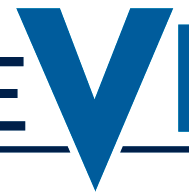As we enter the last month of Mayor Bloomberg’s third and final term, one of his signature initiatives remains in limbo: SWAMP. That is, the mayor’s Solid Waste Management Plan, as part of which, all of Manhattan’s residential recyclable waste was to have been barged from Gansevoort Peninsula to a new recycling plant in Sunset Park.
Because Gansevoort Peninsula — which juts into the river west of the Meatpacking District — is in Hudson River Park, legislation was needed to allow the “alienation” of parkland for a marine waste transfer station. The state Legislature passed the required legislation six years ago.
Yet, the plan has lain dormant because a key memorandum of understanding, or M.O.U., is unsigned. In return for alienating 1.36 acres of parkland on the 8-acre peninsula — needed for a road for garbage trucks to reach the M.W.T.S. — the Trust, under the M.O.U., would receive $50 million, we’re told. But the mayor, governor and heads of the Assembly and state Senate all must sign the M.O.U. Bloomberg is ready to sign, but the state clearly doesn’t have the desire to do so.
So, the clock will run out on Bloomberg with SWAMP unapproved. That will come as good news to many Villagers who don’t relish the idea of 60 or more, diesel particulate-belching garbage trucks rumbling daily across the park’s bikeway and walkway onto the peninsula. Adding to parents’ concerns, just a few hundred feet away is a popular children’s water-play pier.
Five years ago, the Friends of Hudson River Park and local elected officials, including Assemblymembers Deborah Glick and Richard Gottfried, proposed Pier 76, at W. 36th St. in Chelsea, as an alternative site for the M.W.T.S. The city responded that retrofitting part of Pier 76 as a transfer station would be too expensive, costing millions more than siting such a facility at Gansevoort. Calling city officials “disrespectful,” Glick charged they barely even “flipped through” the alternative proposal. Ross Graham, then-co-chairperson of the Friends, declared they were reserving the right to sue over the M.W.T.S.
In fact, back in 2006, Community Board 4, which covers Chelsea, actually supported the Pier 76 alternative, feeling Gansevoort — which is near Chelsea — is the better site for park use, plus, the area around Pier 76 isn’t residential.
The most controversial — or highly publicized — part of SWAMP calls for a transfer station at E. 90th to export Manhattan’s other garbage to whichever municipalities want us to pay them to take it.
So where are things now? The Brooklyn recycling center has been completed. But it’s been a decade since the Bloomberg administration launched the SWAMP idea, and all we have is that one facility.
As for Pier 76, also included — along with park air-rights transfers — in the recent legislative amendment to the Hudson River Park Act that Governor Cuomo finally signed, is a provision under which commercial revenue from Pier 76 now all will go to the Trust. Previously, the city was to get the commercial revenue generated on half of the pier. The other half of the pier will be developed for recreational park use. Meanwhile, Gottfried and others still want another amendment, to allow hotel use at Pier 76, which, if approved, surely would nix a garbage-barging operation there.
Farther south, it’s expected the new Spring St. megagarage will be completed by 2015, allowing the garbage trucks currently parked on Gansevoort to relocate there, paving the way for the peninsula’s redevelopment into a genuine park.
There was a study 10 years ago about sending Manhattan’s garbage out of the city by freight rail. Other activists note many cities now use “closed-system technology” to turn putrescible garbage into methane gas or biodiesel.
In short, 10 years is a long time. And the Village will have more than its fair share of garbage trucks just with the new Spring St. three-district megagarage alone. With a new administration, it’s time to scrap SWAMP — and completely reassess the city’s approach to waste management with a fresh eye.


















